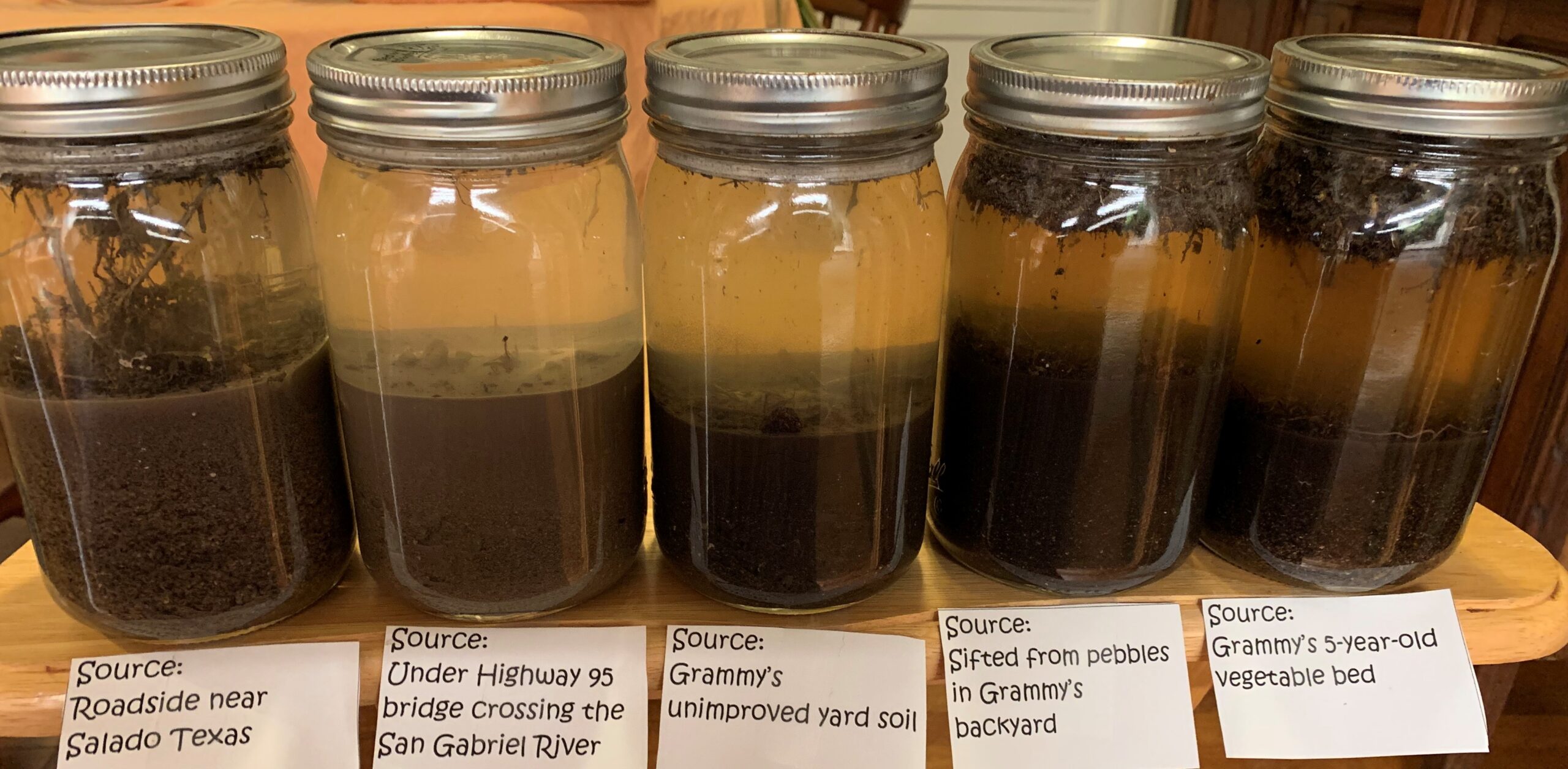The Real Dirt on Dirt
Dirt is so undervalued! We hate dirt in so many senses – dirt on our clothes, dirt under our fingernails, dirt on the kitchen floor. When we think of dirt, our first reaction is probably, ick, I’ve got to get this off of me as quick as I can. We don’t like to be dirty. Still, everything we eat comes from dirt, or the more polite way to say it is soil. That stuff under your feet is so much more than just dirt. Build better soil to turn the dirt underfoot into productive garden soil and glorious gardens.
Add Organic Matter to Build Better Soil
We need the soil in the garden to contain as much organic matter as possible. Organic matter is the magic component that builds better soil and helps plants to grow. Another post will cover the many different ways organic matter does that.
We can add compost, and should, but it is definitely not once and done. As much as 90 % of organic material disappears as it decomposes. You need 10 pounds of organic material to end up with one pound of organic matter left to help out our plants. So add organic matter, and keep adding it to keep up the percentage of organic matter in your soil.
You can think of organic matter as a sponge in the soil, because organic matter is able to hold up to 90 percent of its weight in water. That is like water in the bank for your thirsty plants, and it releases the water as the plants need it.
The Building Blocks of Dirt
In addition to organic matter, there are three basic mineral building blocks in dirt. These are clay, silt, and sand. These three building blocks are very different sizes. Although the sizes pf each block differ from one another, they can vary quite a bit even within their type.
Comparing the average size one to another, if a particle of sand was the size of a basketball, then silt would be the size of a baseball, and clay would be the size of a marble.
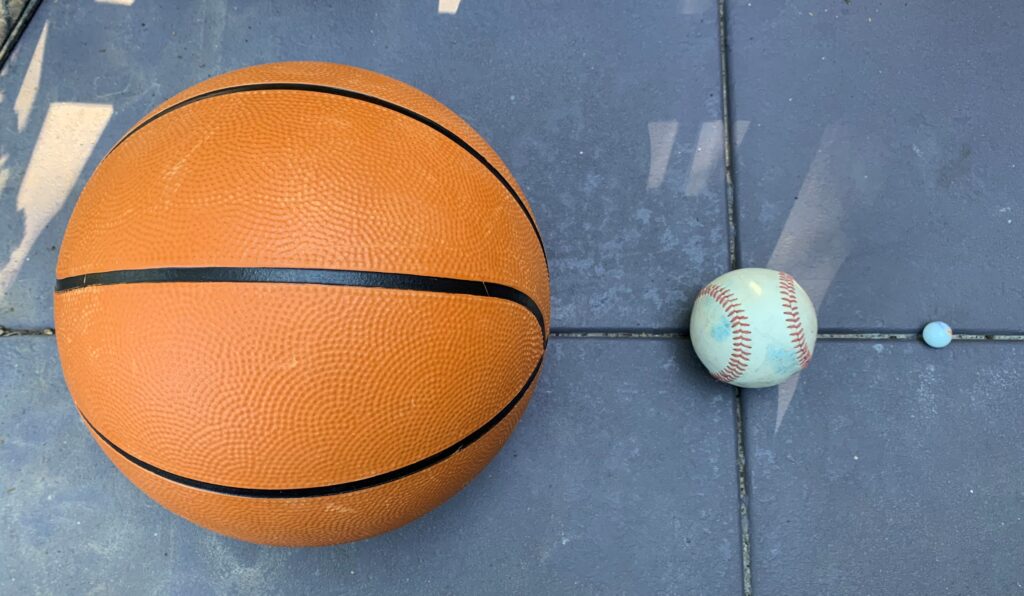
An ideal soil would have equal parts sand, silt, clay and organics matter. The kind of soil you already have determines what you need to do next to build better soil.
Try This Soil Experiment to Build Better Soil
A good way to tell what kind of building blocks you have, and what steps you will need to take to build better soil, is to put two cups of soil in a quart jar. Then shake up the jar. Put the jar on a table, and check your jar after one hour, two hours, and overnight.
If you have sandy soil, the sand will fall quickly to the bottom even as soon as one hour. If you have a lot of silt in your soil, it will be the next layer. Both the sand and silt will have settled out within six hours. Clay stays suspended in the water the longest period of time and when it settles, the clay will be the top layer.
Grammy’s Experiment
I tried the soil experiment with the following five soil samples:
- Some dirt I dug up from a roadside in Salado Texas.
- Some dirt that I gathered from under a bridge near the San Gabriel River.
- Some dirt I dug up from the side yard where I haven’t been gardening.
- Dirt that I had sifted out of some pebbles that had been laying out in the yard on a tarp.
- My vegetable garden soil that I have been working to improve for 5 years,
Here they are just after I shook the jars up.
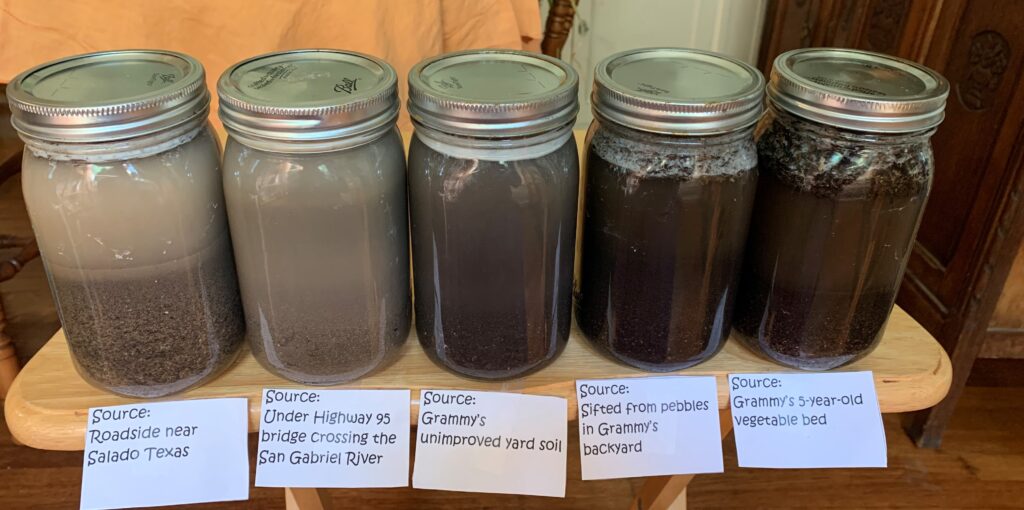
You can tell a lot even before the soils have settled. From left to right, the soils get darker and darker. That means the organic content has gone up dramatically as you look to the right.
Results of Soil Experiment
Here they are the next morning.

Each soil sample looks very different after the period of setting. You can see the color darkens, as I mentioned before. Zoom in to look closer so you can see the differing sizes of the particles in the soil.
Sample 1: Roadside near Salado, Texas
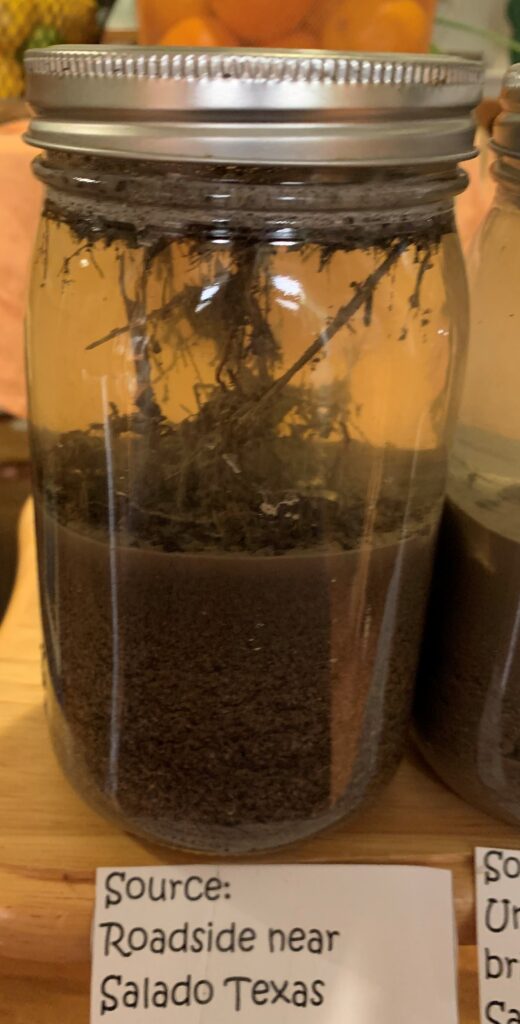
Much of Central Texas is clay soil, but you can see that the soil I dug up near Salado has a lot of sand in the bottom, and silt on top of the sand with a very thin layer of clay on the top. You can see some grass that was on top of the soil and is now floating on top of the water, but in general, the level of organic matter is very low as shown by the light, sandy color.
Sample 2: Under Highway 95 Bridge over the San Gabriel River
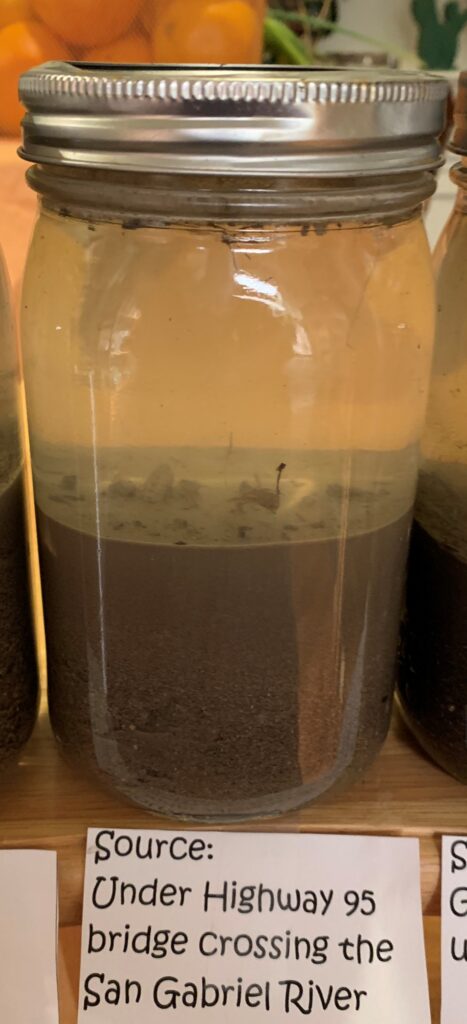
Under the San Gabriel bridge, there is a little bit of sand with a larger layer of silt, but the thickest layer is the clay on top. I could tell there was quite a bit of clay because as I dug the soil up, it really stuck together in clumps, which is one of the characteristics of clay. After all, they use clay to make dishes and pots.
Sample 3: Soil from Unimproved Part of Grammy’s Yard
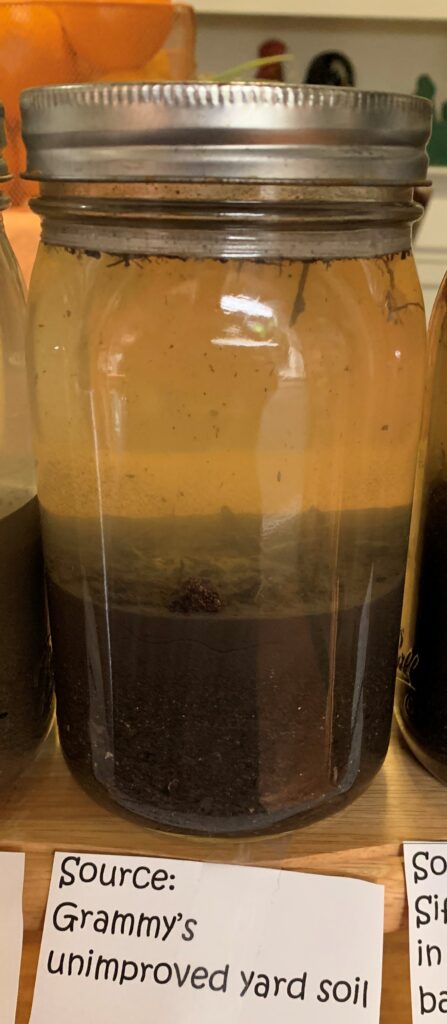
The unimproved soil from my yard shows quite a bit of sand at the bottom, and the clay on top. I was surprised by this finding because it seemed pretty much like pure clay to me. The soil may have been changed by building materials near the house. You can also see a very thin layer of organic matter on top of the clay, and also floating in the top of the jar. Organic matter is lighter than water because it is more porous than the mineral components.
This shows where my garden soil started before I worked to build better soil.
Sample 4: Soil Sifted from Pebbles in Grammy’s Backyard.
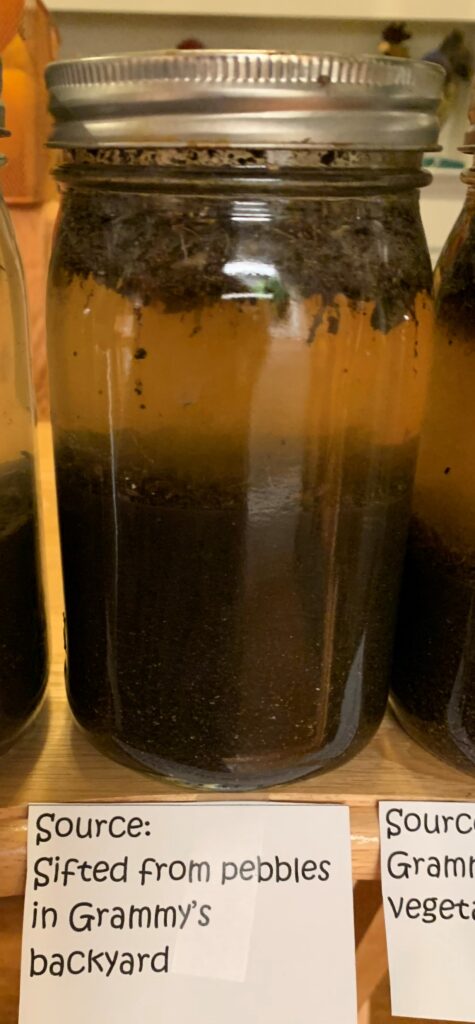
The soil sifted from pebbles which had been laying on a tarp out in my yard shows lots of organic matter floating at the top. This is from leaves falling from the hackberry trees. It also shows a layer of sand in the bottom, probably from the breakdown of the pebbles into sand.
Sample 5: Soil from Five-Year-Old Vegetable Bed
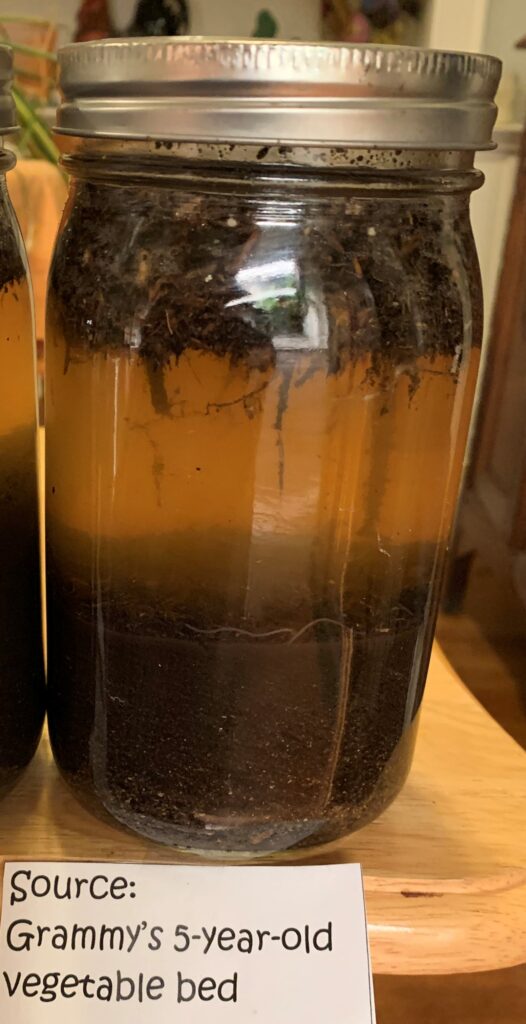
The soil experiment shows my five-year-old vegetable bed had about 1/3 of the solids in the form of organic matter floating at the top, about 1/6 of the solids as clay, and the rest is sand. That is a nice composition for a garden bed. You can also tell that soil has lots of organic matter because it is a deeper color of brown than roadside and under the bridge samples.
I started this vegetable bed five years ago on top of an old driveway that had been covered with decomposed granite, so that is the source of the sand. To build better soil, I added compost, horse manure, cardboard and mulch for the five years. I use cardboard and mulch as a weed suppressant, as described in an earlier blog post “The Best Method Ever for Dealing with Weeds,” but it has the secondary benefit of adding organic matter to the soil.
Steps to Build Better Soil
The soil experiment showed me that I really had made progress. All that compost and mulch and cardboard had resulted in better soil. Although the soil looked and much better, the experiment made that so much more real. My soil started with pretty much 100% clay soil on top of the decomposed granite. I could barely plant my first tomatoes because it was so hard to shovel out a hole. So hard, I even took a pick ax to it. Now it is visibly much fluffier, and that fluffiness shows up in the soil experiment as all that organic matter floating on top of the water.
Are you ready to do your own experiment? Let me know how it goes and what you will do to build better soil!
